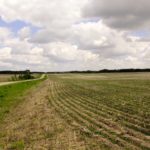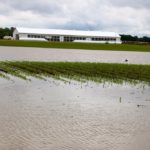
Soil organic freefall
Comparisons that date back 40 years or more in some counties show just how much organic matter we’ve lost, and how hard it’s going to be to replace it

The best crop row spacing is…
A multi-year study suggests there is no one-size-fits-all answer to the question

Some old ways aren’t better, but…
Long-term rotation study underlines that summerfallow harms soil health, but the old mixed farming model looks pretty good

PHOTOS: Farm Show demo digs deep on value of soil health
Roots, worm casts and different cover blends show amazing effects

The news on soil health
This time, will farmers finally break the “build-up then burn-out” cycle of soil management? The Ontario Soil Network thinks the answer may be yes

It’s not soil ‘quality’…
Terminology can make a difference, and using ‘health’ rather than ‘quality’ is helping bring together different interests to a common cause

Big rains put Ontario crops under water
Time is now the factor for submerged crops if they are to remain healthy

Subsurface drip irrigation
Interest is growing even in corn and soybeans, although it’s not for everyone

Who’s to blame?
Variable-rate technology is getting adopted, but not nearly as quickly as many farmers would like. Finally, this may soon change.

Manage down-force
New monitors and individual-unit controls give growers a better shot at top yields


